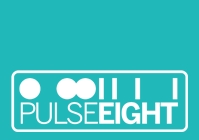Pulse-Eight Internal HDMI CEC Adapter

In an HDMI A/V environment, Consumer Electronics Control (CEC) is the glue that ties components together into a cohesive unit–able to be controlled by a single remote without the hassle, or expense, of a normal universal as well as removing infrared’s (IR) line-of-site requirement for playback devices. Where there can be problems with the protocol, most often the root cause is linked to the unfortunate fact that CEC works [best] when every component on the HDMI bus supports it – which until recently has left home theater PC (HTPC) users out in the cold. Coming to market with an HDMI+USB dongle, Pulse-Eight brought this segment into the modern age, but with the form factor trade-offs demanded of an external adapter and lacking of wake-from S5 (soft- off) some compromise was still required. Fortunately for those with Intel Media Series motherboards offering an HTPC_HEADER like the DH61AG or DH77DF, Pulse-Eight is back with an internal solution able to correct both of these gaps.
Device
Consistent with each of the packages I have received from Pulse-Eight, the Internal CEC adapter arrived safely, encased in bubble wrap and sporting a foam pad to protect its pins. Just a bit larger than a quarter, the PCB fit easily into the Wesena ITX5. Unfortunately I was not able to find a place in the case to mount the board using the holes provided; this is not unexpected so Pulse-Eight provides a mounting pad which can be used to attach it directly to the chassis. Control is supplied via USB, so besides the HTPC_HEADER which provides power and access to the CEC and REC_LED pins, a free internal header is required. I had no trouble finding one on the Intel DH77DF used for testing, but since the BIOS on the board does not implement the necessary support for the REC_LED it was untested in this review. For those leveraging this feature, it is important to note that while four pins are present for structural stability, the LED should be attached to the two pins furthest from the edge marked with a “+” opposite the set marked with “NC”. Electricity consumption was minimal with only a 0.1 watt difference noted in various states with the adapter fully installed.
Use
While OpenELEC provide a more seamless installation experience, it cannot be said that other platforms must suffer to enjoy the same integration in alternate builds of XBMC–including Microsoft Windows. Inside XBMC the experience is almost identical, with only a slightly higher tendency to detect register two key presses when only one was intended (an issue that will be fixed shortly). Those with slow fingers, or overly sensitive remotes, would benefit from a configurable minimum delay between presses to avoid the problem, but given its infrequent nature the current state is certainly livable.
Conclusion
Finding the strengths and weakness in a product is an area which receives a significant amount of attention in our reviews, so it is somewhat frustrating when the “Con” list reads like a set of nitpicks instead of serious complaints – which is the case with Pulse-Eight’s internal HDMI CEC adapter. Irrespective of platform, XBMC users enjoy an outstanding control experience and can comfortably place the system anywhere in the A/V cabinet without fear or need for a keyboard. Full support for Microsoft Windows and applications outside of XBMC is still a work in progress however, so I look forward to watching that develop in the next few months. It is clear to me that by offering all of the features expected from a device of this type, including waking the PC from S3/S5 and input selection, this device makes the HTPC a first class citizen on the HDMI bus. That it comes in an outstanding form factor and at a reasonable price means everyone wins.
Pro:
- Small, low power HDMI CEC solution
- Can wake PC from S5 (off) and S3 (standby) in Linux and Windows
- FOSS SDK for non-commercial use
Con:
- Requires a motherboard with HTPC_HEADER
- Currently only XBMC enjoy full support
Thanks to Pulse-Eight for providing the review sample.

How long are the included
How long are the included USB- and HTPC-cables?
I’ll just answer myself if
I’ll just answer myself if anyone else is interested. The USB-cable is about 20cm and the HTPC-cable about 35cm long.
Sorry. I put this on my TODO
Sorry. I put this on my TODO list, but haven’t been able to find the time when it’s convenient to rip the PC apart :).
Very cool tech.Wish I had a
Very cool tech.
Wish I had a compatible motherboard in my HTPC.
Now to look for an external HDMI CEC Adapter that could do the same thing.
Can anyone recommend such an addapter?
Pulse-Eight also makes an
Pulse-Eight also makes an external CEC adapter.
Yes I was looking at it on
Yes I was looking at it on the site.